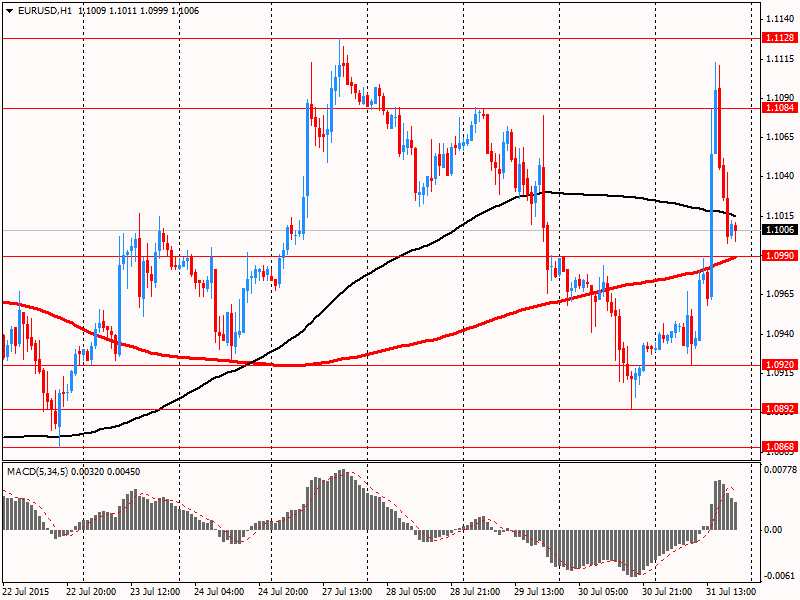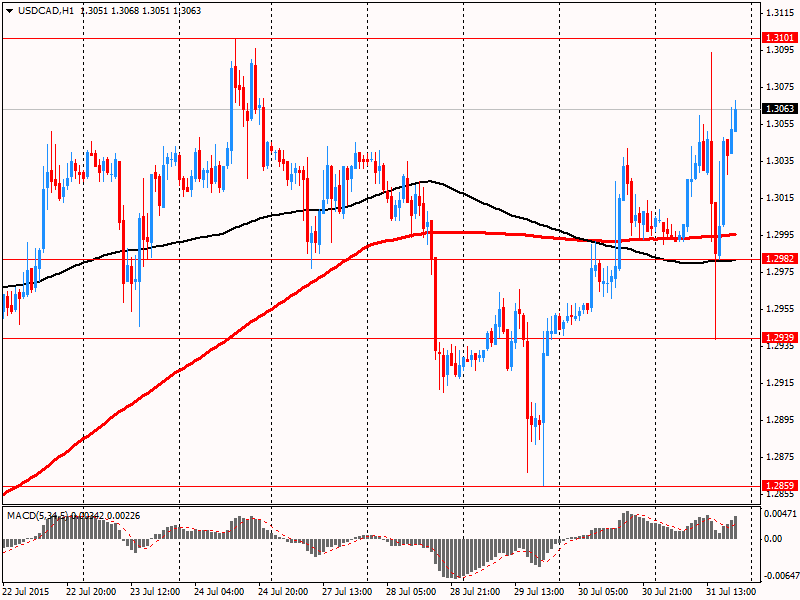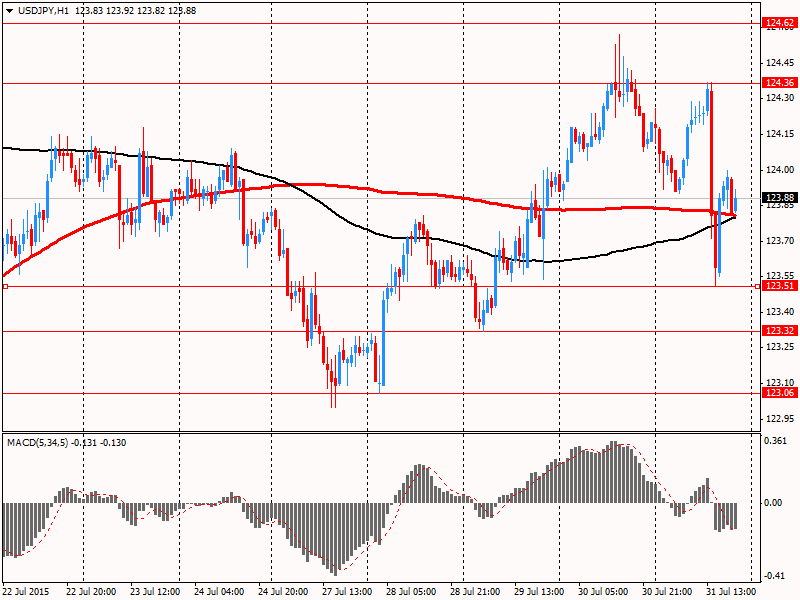- Analytics
- News and Tools
- Market News
- American focus: the dollar fell against most major currencies
American focus: the dollar fell against most major currencies
The euro rose substantially against the dollar, rising briefly above $ 1.1100, which was caused by the publication of weak data on labor costs in the United States. Later, the pair once again dropped below $ 1.1000, the cause of which was the correction of the positions at the end of the month.
Experts said that the latest data intensified fears of a postponement of the first Fed rate hike. Recall, the Labor Department reported that the results of the 2nd quarter of wage growth in the US slowed down as much as possible since the beginning of the study, while experts predicted that improvements in the labor market have a positive impact on the dynamics of wages. The growth in the 2nd quarter by 0.2% was the lowest since 1982. In the 1st quarter figure stood at around 0.7%. Economists had expected an increase of 0.6%. Fed monitors data on wage growth closer to raising interest rates to a level close to zero, at which they are to the end of 2008. Accelerating wage growth will signal that the labor market is finally approached the health of six years after the recession, and could push the Fed to the earlier increase in interest rates to avoid overheating the economy. However, the recent slowdown indicates that the labor market is maintained below capacity, which could cause the Fed to wait before raising interest rates.
The Canadian dollar dropped significantly against the US dollar came under pressure on GDP Statistics Canada. Recall, the Canadian economy shrank for the fifth month in a row in May, under pressure from weak results in industrial output, oil and gas extraction, and wholesale trade. Gross domestic product, a broad measure of the goods and services produced in the economy, fell 0.2% to 1.64 trillion Canadian dollars ($ 1.26 trillion.) In May from the previous month, Statistics Canada reported. The results follow the decrease in GDP in April by 0.1%. Market expectations were that Canada's GDP will remain unchanged in May. GDP data is likely to support the debate whether Canada has entered into a recession - which is usually defined as two consecutive quarters of contraction - during the first half of 2015. The Canadian economy shrank by 0.6% year on year in the first quarter, and the Bank of Canada earlier this month cut its forecast for the second quarter to a contraction of 0.5%.
The yen retreated from session highs against the dollar, approaching to the level of Y124.00, as investors began to shift attention to US employment data, which will be presented next Friday. Also had little impact on the statistics potrebdoveriyu USA and Chicago PMI. Recall, the final results of the studies submitted by Thomson-Reuters and the Institute of Michigan, revealed in July US consumers feel more pessimistic about the economy than last month. According to published data, in July consumer sentiment index fell to 93.1 points compared to the final reading for June at the level of 96.1 points and a preliminary value of 93.3 points in July. According to experts the average index had reached 94 points.
Meanwhile, the Association of Managers in Chicago said the PMI index rose sharply at the beginning of the third quarter, exceeding the level at 50 and reaching the highest level since January 2015. According to the data, the July Purchasing Managers' Index rose to Chicago 5.3 points to 54.7 points. Analysts had expected the index to rise to 50.5 points. While all of the components that make up the index increased in July, three of them (pending orders, shipments and employment) remained in the territory of the reduction.
© 2000-2025. All rights reserved.
This site is managed by Teletrade D.J. LLC 2351 LLC 2022 (Euro House, Richmond Hill Road, Kingstown, VC0100, St. Vincent and the Grenadines).
The information on this website is for informational purposes only and does not constitute any investment advice.
The company does not serve or provide services to customers who are residents of the US, Canada, Iran, The Democratic People's Republic of Korea, Yemen and FATF blacklisted countries.
Making transactions on financial markets with marginal financial instruments opens up wide possibilities and allows investors who are willing to take risks to earn high profits, carrying a potentially high risk of losses at the same time. Therefore you should responsibly approach the issue of choosing the appropriate investment strategy, taking the available resources into account, before starting trading.
Use of the information: full or partial use of materials from this website must always be referenced to TeleTrade as the source of information. Use of the materials on the Internet must be accompanied by a hyperlink to teletrade.org. Automatic import of materials and information from this website is prohibited.
Please contact our PR department if you have any questions or need assistance at pr@teletrade.global.


















